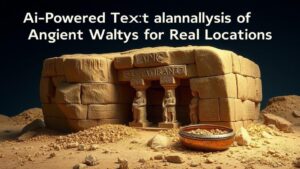Tracing Disused Gold Mining Towns for Forgotten Vein Locations
Tracing Disused Gold Mining Towns for Forgotten Vein Locations
The exploration and examination of disused gold mining towns constitute a significant aspect of understanding historical mining practices and the locations of erstwhile mineral veins. As mining activities dwindled and towns were abandoned, invaluable information about gold vein locations has often fallen into obscurity. This paper aims to trace these forgotten vein locations through a concise examination of historical data, town sites, and subsequently apply this knowledge to modern mining strategies.
Historical Context and Significance
Gold mining has historically been a driving force for economic development in various regions across the globe. California Gold Rush of 1849 and the Klondike Gold Rush of the late 1890s are prime examples, demonstrating how these mining activities created entire towns. For example, the town of Bodie, California, established in 1859, was once home to over 10,000 residents and produced about $37 million in gold by the early 19th century. But, as urban shifts occurred and gold became harder to extract, many of these towns were deserted, leaving behind a rich legacy of mining history and geological value.
Potential Research Methodologies
The study of disused gold mining towns can employ various methodologies, including archival research, geological surveys, and field investigations. Specific strategies may include:
- Site Visits: Conducting physical explorations of former mining towns to analyze their ruins and extract geological samples.
- Geographical Information Systems (GIS): Mapping historical sites against current geological data to identify potential unexplored veins.
- Interviews: Engaging with local historians and mining experts to uncover oral histories and anecdotal evidence associated with past mining endeavors.
Identifying Forgotten Vein Locations
The process of identifying forgotten vein locations is essential for contemporary mining endeavors. Using geological maps from the 19th century alongside modern technological advances can shed light on previously neglected veins. One notable example is the use of remote sensing technology, which enables the identification of mineral deposits that are still undiscovered.
For example, in the state of Nevada, historical records indicate that the mining town of Goldfield was established in 1903 and experienced a significant production peak until its decline in the 1920s. Recent studies utilizing drone mapping and spectrometry have uncovered new sites around Goldfield that may still contain valuable mineral veins, reaffirming the potential of re-examining historical mining districts.
The Economic Implications of Rediscovery
The rediscovery of forgotten gold veins within abandoned mining towns holds substantial economic implications. According to a 2021 report by the U.S. Geological Survey, precious metals mining contributes over $40 billion annually to the national economy. By reinvigorating interest in previously overlooked mining locales, industries can tap into resources that may still yield significant returns.
Also, sustainable mining practices employed to minimize environmental impact, further driving interest in reclaiming these historical locations. Companies such as SSR Mining have demonstrated success in maximizing resource recovery while adhering to modern environmental standards.
Challenges and Considerations
While there are immense opportunities in tracing disused mining towns, various challenges remain. These include:
- Environmental Concerns: Re-exploration could lead to disturbers in ecosystems that have reclaimed mining sites over decades.
- Legal Issues: Ownership and land-use rights may complicate the rediscovery of vein locations.
- Economic Viability: The fluctuating prices of gold can affect the economic feasibility of redeveloping these sites.
Conclusion and Actions for Future Research
The study of disused gold mining towns offers a unique perspective on the integration of historical context and modern geological examination. By utilizing innovative technologies and methodologies, researchers can reveal forgotten vein locations that might contribute to future economic benefits and resource management. Future research should prioritize interdisciplinary approaches combining history, geology, and economic strategies, thereby enhancing our understanding of these valuable historical sites.
In summary, tracing forgotten vein locations is not merely a quest for lost riches; it is an opportunity to bridge historical practices with modern interests in sustainability and economic growth. pursuit of this knowledge stands to benefit both the mining sector and local communities alike.


